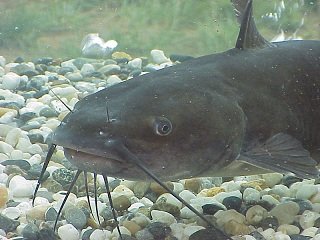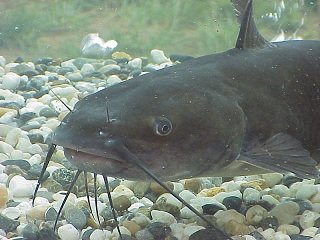 While it may not be as actively involved as bass fishing, where a constant pattern of changing lures, casting, and altering retrievals abounds, catfish anglers will tell you that fishing for whiskered giants offers some of the most challenging fights you can have on the water. Like many other species, catfish require a variation of tackle that most may not be familiar with. If you’re interested in pulling in a few of these tasty fish this summer, however, then it might do you well to pick up a few new pieces of equipment and hold on for the ride.
While it may not be as actively involved as bass fishing, where a constant pattern of changing lures, casting, and altering retrievals abounds, catfish anglers will tell you that fishing for whiskered giants offers some of the most challenging fights you can have on the water. Like many other species, catfish require a variation of tackle that most may not be familiar with. If you’re interested in pulling in a few of these tasty fish this summer, however, then it might do you well to pick up a few new pieces of equipment and hold on for the ride.
The average fish size for whatever body of water you’ll be fishing will have a large impact on the tackle you’ll need. Farm ponds and smaller lakes, where catfish aren’t able to grow that large, will allow you to get away with using a bass setup. However, for those anglers seeking out the larger cats that lurk in the muddy waters, you may want to look into picking up some heavier-duty tackle to get the job done. High-profile baitcast reels are your best bet for muscling in giant catfish. Bass Pro Shops’ Cat Maxx reel is designed for such a purpose, and Abu Garcia’s BCX, Kalex, or Ambassadeur will work well, too. These reels are made to hold the heavy line required to secure large fish and basically act as a winch when pulling them in. Likewise, the rod you use will depend on the fish size and then the size of the reel you’ll need. You’ll need something with some backbone, so a medium, to medium-heavy action rod of at least six-feet will work well.
Catfish aren’t as skittish as bass, so you can use heavier line. In most cases, monofilament from 15 to 25 lb test will work just fine. I may sound like a broken record when it comes to monofilament, but P-Line’s CXX really is one of the best lines I’ve ever used. Sufix’s Siege and Elite monofilaments are good choices as well. For bigger fish, heavier line, or even braided line may be your best bet. Often times, catfish make their homes amidst objects such as logs or stones, and heavier line will ensure that you don’t lose a fish in such situations.
To complete your catfish tackle, you’ll also need to pick up some hooks, heavy sinkers, and some sort of float device. Optimal hooks for cats include octopus, O’Shaughnessy, and circle. Try to find the smallest hook you can get away with, but make sure it’s still strong. Sinkers such as split shots, bells, pyramids, and bottom bouncers are popular among catfish anglers, and are used to keep your bait at the bottom, especially when fishing current. It may bring back memories of bank fishing as a kid, but bobbers are essential for catfish. Shallow waters will enable you to use fixed bobbers, but slip floats are better when fishing deeper.
For those of you who’ve never hunted catfish before, that should get you started off on the right foot. For cheap bait, check out my article on catfish bait, where I’ve highlighted highly-effective baits that can be found in your local grocery store. Catfish are one of the most delicious fish I’ve ever tasted and, sliced thin and deep-fried, can’t be beat in my opinion. As a game species, they fight hard, require much patience, and will make you earn every inch of line you reel in. Good luck to you all!








